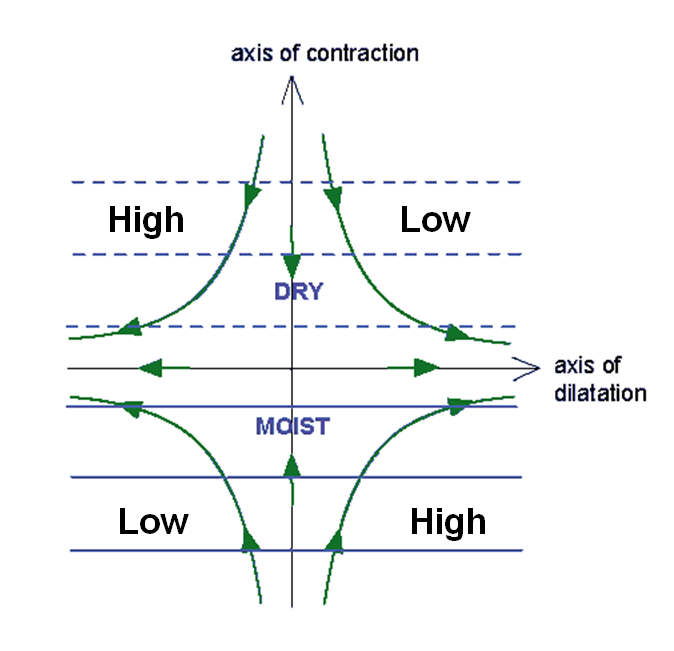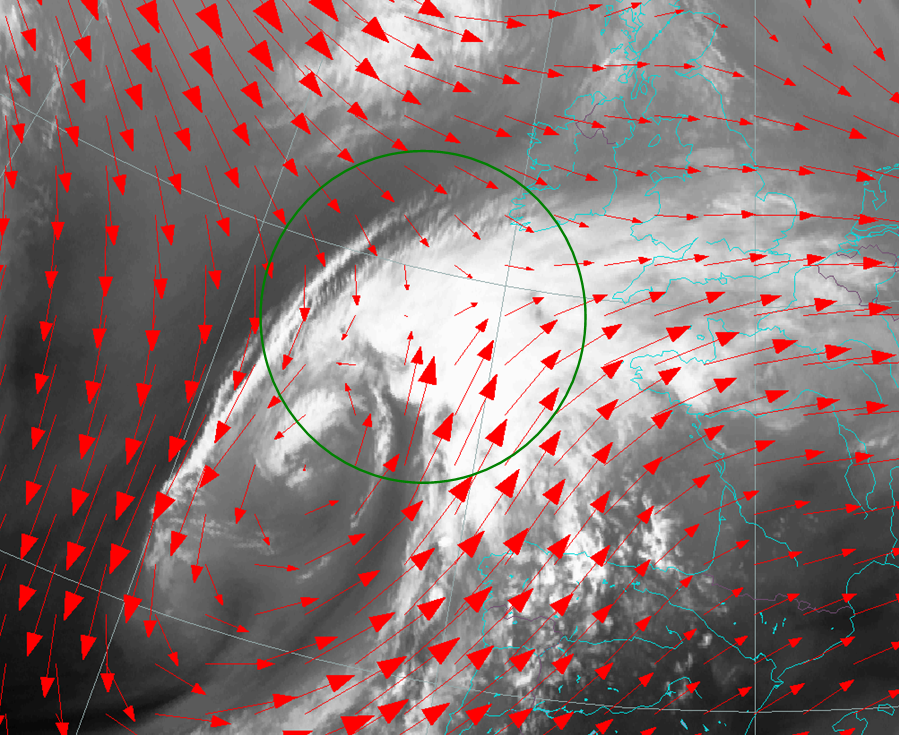Deformation zones
Deformation zones are regions where the atmospheric flow is undergoing contraction in one direction and elongation (or stretching) in the perpendicular direction. A circulation pattern opposing cyclonic and anticyclonic circulation is necessary for deformation zones to form.
Figure 1: Schematic showing a deformation zone. The green arrows indicate the direction of the air stream around high and low pressure zones.
Since WV acts as a tracer in the atmosphere, deformation zones are easy to detect in WV image loops, particularly in cases when IR and VIS images are cloud free. Deformation zones are revealed by sharply defined moisture contrasts, as there is no mixing across the flows. Because anti-cyclonic circulations tend to be rather dry, black stripes are usually associated to deformation zones. These black stripes are usually located in the vicinity of jet streaks on the cold side of warm fronts and occlusions, or on the cold side of inactive air mass boundaries.
Notice:
| The intensity of the deformation zone is proportional to the strength of the moisture gradient across the zone. Clear air turbulence (CAT) is frequently encountered in deformation zones. |
Figure 2: WV 6.2 µm satellite image from 12 September 2012 at 18:00 UTC. The red arrows indicate wind direction at 500 hPa, and the green circle shows the deformation zone at the occlusion point of the frontal system.
Figure 2 shows a typical location of a deformation zone: near the poleward edges of cloud bands in warm fronts and occlusions. The WV image also shows cloud fibers and transverse cloud bands over the Atlantic southwest of Ireland which are indications of strong winds and wind shear in the upper parts of the troposphere (northwestern part of the green circle).
In this transition zone we also find the splitting of the warm conveyor belt (WCB) into two branches as indicated in figure 3. In mature low pressure systems, the WCB carries moist air from the warm sector ahead of the cold front line towards the occlusion point of the system. At the occlusion point, one branch of the warm conveyor belt turns left along the occluded front, while the other branch is directed along the warm front. As the WCB is continuously rising along its path, the splitting occurs in upper levels of the troposphere, in the vicinity of the jet streak. The sudden change in the direction of the WCB, together with strong wind shear in the vicinity of the jet are factors that favor the occurrence of turbulence.
Figure 3: Schematic of a warm conveyor belt (red) in a mature frontal system.
Notice:
| Deformation zones are not always visible in IR images like in the example above. In fact, air mass boundaries and almost dissolved or inactive cold fronts can have strong deformation without being visible in IR or VIS images. |
This will be shown in the next example.


